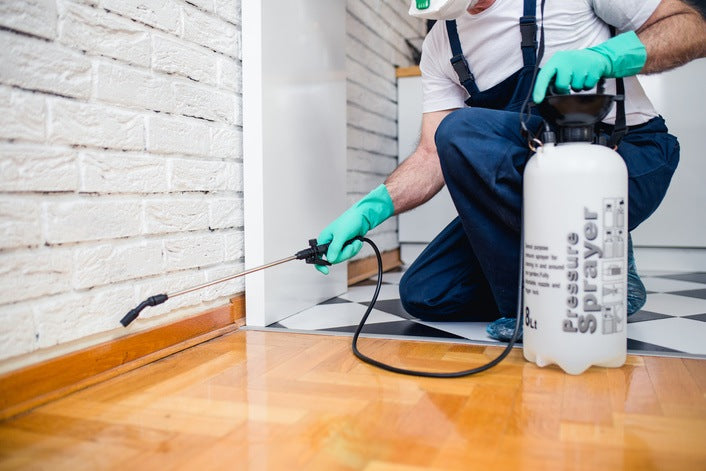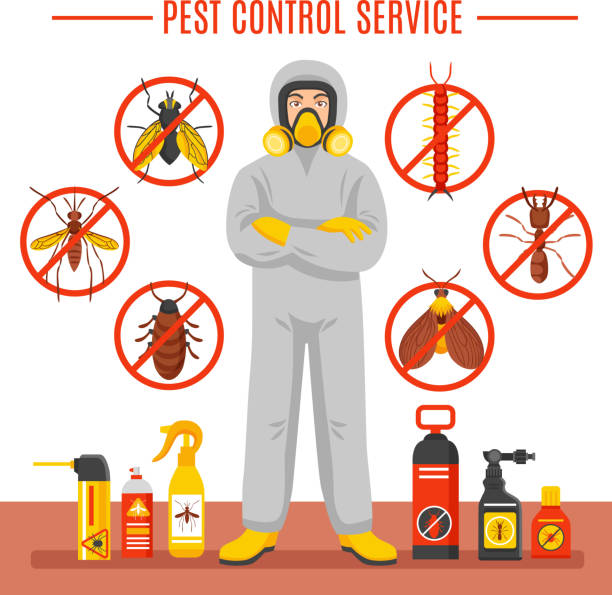Checking Out Problem and Therapy Strategies on the planet of Bug Control
The landscape of pest control encompasses a myriad of difficulties, specifically as problems of common home bugs proceed to advance. By incorporating preventive steps with sophisticated administration methods, such as Integrated Parasite Monitoring (IPM), home owners can much better safeguard their environments.

Common Household Pests
When it pertains to handling our space, recognizing usual house pests is essential. These insects not only disrupt our comfort but can also position health risks and damage residential or commercial property. The most prevalent household pests include ants, roaches, rats, termites, and bed pests.
Ants, often seen foraging in cooking areas, can pollute food and establish huge nests. Rats, consisting of mice and rats, can create structural damages and bring diseases like hantavirus and salmonella.
Identifying the indications of these parasites, such as droppings, nests, or attack marks, is necessary for early treatment (Pest Control Lockhart). Proper hygiene practices, securing entry factors, and maintaining a clutter-free setting are efficient preventative actions. By determining these usual home parasites and comprehending their actions, house owners can take proactive steps to minimize invasions, ensuring a healthier living setting
Comprehending Parasite Infestations
Pest invasions can rise rapidly, transforming a small inconvenience right into a significant issue otherwise addressed quickly. Recognizing the nature of these infestations is important for reliable monitoring. Insects can get into household and business spaces for different factors, consisting of the look for food, sanctuary, or breeding grounds. Common factors adding to problems include poor sanitation, structural vulnerabilities, and seasonal modifications that drive parasites inside.
Recognizing the kind of bug is necessary, as various types display different behaviors and reproductive rates. Rats may establish nests in hidden locations while pests like cockroaches flourish in damp settings. Early discovery commonly depends upon recognizing signs such as droppings, munch marks, or uncommon noises, which can indicate a trouble prior to it becomes severe.
Ecological conditions also play an essential function in insect proliferation. Cozy, damp environments can assist in the fast development of bug populations, while adjustments in landscape design or construction can accidentally produce conducive atmospheres. For that reason, normal assessments and preventative measures are extremely important to alleviating the risk of invasions. An enlightened method to recognizing these dynamics lays the foundation for effective bug management methods in the future.
Treatment Techniques and Strategies
Reliable treatment methods and methods are crucial for mitigating insect invasions and recovering a secure environment. A multifaceted method is commonly best, including chemical, biological, and mechanical strategies tailored to the particular bug and the intensity of the infestation.
Chemical therapies consist of using insecticides and herbicides, which can efficiently eliminate insects. Nevertheless, appropriate application and adherence to security standards are vital to decrease threats to human Resources beings and non-target microorganisms. Integrated Insect Management (IPM) encourages the judicious use chemicals as a last hotel, counting instead on monitoring and threshold degrees to establish treatment requirements.
Organic control techniques involve presenting natural killers or parasites to lower parasite populaces. This approach is progressively preferred, specifically in agricultural settings, as it advertises environmental sustainability.
Mechanical approaches, such as traps and obstacles, supply immediate remedy for pests without presenting chemicals. Options consist of sticky traps for pests or physical barriers for rats.
Ultimately, the option of treatment technique should think about the specific bug, the environment, and prospective influence on human health and wellness and ecosystems. A well balanced mix of these techniques try these out can properly manage invasions while advertising lasting parasite control remedies.
Precautionary Measures for House
Proactively resolving pest problems prior to they rise is important for preserving a healthy and balanced home environment (Pest Control Lockhart). Executing reliable safety nets can substantially lower the likelihood of invasions, eventually guarding both your home and wellness

Appropriate landscaping also plays a vital function in prevention. Keeping shrubs and trees trimmed away from your home reduces the opportunities of parasites locating their method inside your home. Make certain that drain systems are working efficiently to prevent standing water, which can attract in mosquitoes and other insects.
Last but not least, routine inspections are advisable. Frequently examining for indicators of parasite activity enables very early intervention. By adopting these safety nets, property owners can create a setting that is much less hospitable to pests, thus boosting their overall lifestyle and reducing the requirement for comprehensive pest control interventions.
Industrial Parasite Control Approaches
An extensive strategy to commercial bug control is important for companies intending to maintain a secure and sanitary environment. Effective methods involve a combination of normal evaluations, staff member training, and the implementation of Integrated Bug Management (IPM) methods.
Normal evaluations allow very early detection of bug task, permitting timely treatment. Businesses ought to create a regular schedule for these evaluations, concentrating on risky areas such as kitchens, storeroom, and garbage disposal sites. Employee training is similarly critical; staff ought to be informed on the indicators of pest infestations and the significance of reporting them quickly.
Implementing IPM practices assists alleviate bug concerns sustainably. This consists of environment alteration, such as securing access factors and reducing clutter, as well as employing natural deterrents before resorting to chemical treatments.

Furthermore, working together with an accredited parasite control provider ensures accessibility to specialist expertise Resources and innovative therapy alternatives. This collaboration can cause personalized insect control plans tailored to the specific demands of the organization, decreasing threats and improving general efficacy. Eventually, a proactive and informed strategy promotes a pest-free atmosphere, protecting both public health and organization online reputation.
Final Thought
In final thought, effective parasite control requires an extensive understanding of common house bugs and their behaviors, paired with targeted therapy methods. Applying precautionary steps alongside therapy techniques such as Integrated Bug Management and organic control enhances the capacity to mitigate invasions. Regular examinations and a mix of chemical and mechanical solutions better contribute to preserving pest-free atmospheres. Eventually, an all-around method to pest monitoring is necessary for protecting living rooms from unwanted burglars.